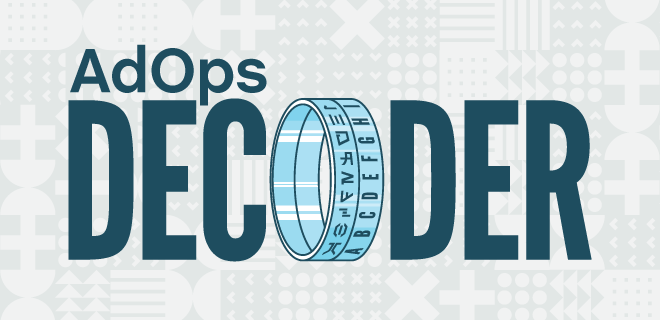
Ad Tech is a neverending world of acronyms, alphabet soup and technical mumbo jumbo. There’s always something new popping up—a new piece of privacy regulation, a new framework, a new requirement—that will alter the way the advertising ecosystem operates. Sometimes there’s just no way of keeping up with or understanding it all.
Well, don’t worry, we got your back.
With our handy decoder ring, AdMonsters Decoder series decodes the latest terminology to enter the ad tech lexicon. This year, everyone was most concerned about privacy regulations, methods for uncovering incremental revenue, as well as what will be some likely alternatives to the third-party tracking cookie.
What Is Google’s New Chrome SameSite Cookie Policy?
Starting February 4, 2020, Under the Incrementally Better Cookies Policy, Chrome will treat cookies that have no declared SameSite value as SameSite=Lax, restricting the sharing of cookie data across sites. For external access, cookies will need to be set to SameSite=None; Secure and will have to be accessed from secure connections. Read more.
What Is Footer Bidding?
The more header bidding adapters you add, the more bids you get and the more money you might make. But, the more requests you make, the more your user experience suffers. Enter Footer Bidding. The idea is simple: Don’t call any ad requests until the page has fully loaded. Instead of getting the ads ready as early as possible, you do it as late as possible. The whole thing sounds quite counterintuitive, so you’re probably wondering why anyone would do that, right? There are several clear benefits, along with a few drawbacks. Read more.
What Is Email Hashing?
Since most people keep their personal email addresses forever, it’s easy to understand why many see the email address as the key to the future of digital marketing and advertising. It can identify audiences cross-device and is people-based in nature. This key to identity and marketing to people is what makes the email hash so important to publishers and marketers. They need to reach known people in a privacy-safe way, and email is the best tool for doing so. Read more.
What Is Google’s Privacy Sandbox?
As the clock ticks on the two-year expiration of the third-party tracking cookie, the advertising industry wonders how advertising tracking and measurement will work. Google has proposed a plan called the Privacy Sandbox, a series of APIs intended to provide users with privacy while ensuring that programmatic will continue to flourish. Read more.
What Is SPARROW?
In May, Criteo submitted SPARROW (Secure Private Advertising Remotely Run On Webserver) to the W3C in response to Google’s privacy sandbox proposal. In response to industry-wide feedback, SPARROW was recently updated to include reporting capabilities to further secure users’ privacy without compromising advertisers’ performance. We spoke with Charles-Henri Henault, VP of Product, Ads Platform and Analytics at Criteo to learn more about the proposal and the update. Read more.
What Is CPRA (CCPA 2.0) And Its Implications for Ad Tech?
The CPRA proposes significant amendments to the CCPA, with many of the proposed rules bearing similarities with those of the European Union’s General Data Protection Regulation (GDPR). While there are many areas of the CCPA that would be updated, here Serafin Lion Engel, CEO of Datawallet, focuses on the amendments specifically important to the online advertising ecosystem, as the CPRA introduces rules meant to address the current ambiguity surrounding AdTech and Real-Time-Bidding (RTB). Read more.